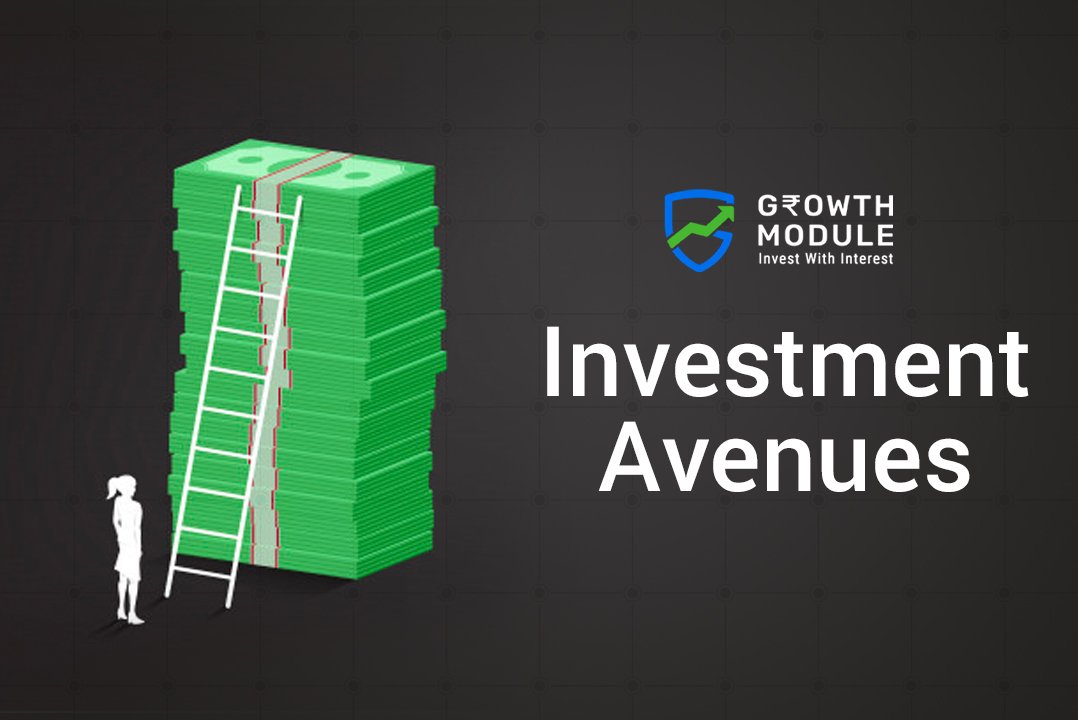What are the types of investments that everyone should have?
When it comes to investments, the first question that one should be asking is “what is your age?” This should be followed by “What is your risk appetite?” While the answer to the first question is very straight forward and does not require you to think much, but the second question is not that easy to answer. People usually get into the thinking mode when posed with the second question.
The two powerful R’s in investments are Risk and Return. In simple words, Risk is the money you are ready to part now, in expectation of future benefits. However, there is a probability that the portion of money set for investment may not bring the benefit within the expected time or you may lose it completely if you have not invested it in the right place. So, it is important to calculate the risk of different investment options along with personal goals and diversify your investments accordingly. Here are some of the options available easily:
1) Public Provident Fund (PPF): This is a popular investment avenue in India as it is considered safe. However, it comes with rules attached.
a) It offers tax benefit under Section 80C of Income Tax Act. Interest earned until maturity are also exempt from tax (yes it’s tax-free).
b) It has a lock-in period of 15 years, which means there is no liquidity.
c) Post maturity of 15 years, it can be extended in blocks of five years for any number of times.
d) Interest paid on PPF is reviewed by Government frequently. July-Sept 2019 rate of interest is 7.9% compounded annually.
e) Some loans are issued with PPF balance as guarantee.
2) Bank Fixed Deposits (FD): According to me, this is most misunderstood investment avenue. In FD, we lock our funds for a stipulated time, get minimal interest paid on we also pay tax on interest earned.
a) The duration of FD ranges from 7 days to 10 years (even more in some cases). One can choose any time range according to their choice. Interest rate varies according to tenure.
b) FDs offer premature withdrawal options but with penalty. One should make a note of this with their bank at the time of opening the account.
c) FDs are insured by Deposit Insurance and Credit Guarantee Corporation (DICGC) rules. Under this, only up to Rs 1 lakh (principal plus interest) is insured per person per bank.
d) Interest rates vary from 5% to 7% for tenures 1 to 10 Yrs. Senior Citizens get extra 0.5%
e) Bank FDs offer cumulative and non-cumulative options. In the cumulative option, the interest is re-invested and payable on maturity whereas, in the non-cumulative option, interest is payable periodically (monthly, quarterly or annually depending on the bank).
f) Interest is added to your income and taxed as per your income tax slabs. Interest is subject to tax deducted at source (TDS)
3) Real Estate: This is another popular investment. There is two way of seeing this. If one is buying the first house in which he/she wants to stay, then it has to be bought in the beginning of one’s career (assuming it is bought availing home loan). In this manner it is easy to absorb the EMI (equated monthly instalments) as there are many working years till retirement. If the same is done 15 years later, then the EMI will be a burden. Having said this let’s check the following:
a) Home Loan is a long goal with repayment of loan ranging from 15 to 20 years.
b) Rental income of home is around 2-3% and interest on EMI is between 8-9%. This is not a great investment if one is looking to earn income from rent.
c) This investment is very illiquid i.e. buying/selling is time consuming. Cash flows are not immediate.
d) Capital appreciation on a home is not always positive. Many people hold on to property assuming that it will give a great appreciation. However, if you consider inflation rate it may not be very impressive. Also, the capital gains (profit from sale of property) have to be dealt in specific manner as per Income Tax Act. Details in this case vary from case to case and Chartered Accountant will be better person to guide you on this.
4) Gold: One can buy gold in various forms- physical, paper or digital. Physical form is jewels, the paper form is gold bonds and digital form is gold ETF (explained in point 6).
a) Gold bought for personal use is individual choice. However, gold bought for investments can be in any of the above mentioned forms.
b) Gold is often used to offset the risk associated with other investment options. For example, when equity, bond or real estate are in downward trend gold acts as a hedge. In short, the value of gold is same globally. Therefore, it is sometimes used to offset the risks associated with equity or bond markets.
c) Gold has not given the best return when one considers tenure of 20 years or more. It is recommended to have a limited investments exposure in gold.
5) Mutual Funds: There are several types of Mutual Funds. Equity Mutual Funds, Debt Mutual Funds and Balanced Funds.
a) Equity mutual funds are those schemes that invest at least 65% of the corpus in stocks of Indian companies. These are volatile as most part of the investment is in equity stocks which are subject to market risks.
b) Debt mutual funds are considered less volatile as compared to equity; however, there is always a risk in terms of interest rate. Most of these funds invest in debt funds like government securities, corporate bonds, treasury bills etc.
c) Balanced funds have a balance mix of equity and debt. This to some extent cuts the volatility and balances the return as well.
d) Most of these funds are managed professionally by fund houses. There are policies and documents where one can see the profile of fund managers and where the funds are invested.
e) For a long-term investor, the most suitable investment would be in equity based mutual funds. For investments above 5 years equity is the only area where there is maximum return.
f) For those who have no expertise in stock markets or for those who do not have time to analyze the markets and invest periodically the best way to invest in equity is through mutual funds.
6) Exchange Traded Funds (ETF): ETFs are many in number. However, the preferred investment is in Index ETFs. These are just like mutual funds, but the returns are based on performance of an index. For example: Nifty Bees are ETFs where the return on investment is based on performance of Nifty50 index. Similarly, Gold Bees are investments where the return is as per price movement on Gold.
a) ETFs are cost-efficient. Mutual funds are embedded with cost which we do not see in our statements. Most of the funds charge 2.5 to 3% on your investments to manage your funds. However, in ETFs the cost is minimal, as little as 0.5% or less.
b) ETFs are managed digitally and most of them can be invested through DMAT account. There is no need to deposit a cheque or fill a form or visit a branch. It is easily manageable.
c) All investment details are available online. These are more transparent and less risk.
d) With the ease of management, this is the most liquid investment option just like Equity. In case of emergency, one can withdraw cash within minutes.
e) Index funds like Nifty Bees have given a return of 15 % to 20% in past 3 years, which are far superior than fixed deposits. Gold ETF has given returns of 9% to 10% in the past 3 years.
7) Direct Equity: Investors who understand stock markets and are willing to take risks on their own can directly invest in Equity stocks of several listed companies and create their own portfolio.
a) Direct equity investments are considered risky as they are subject to price fluctuation on stocks (volatility). This could lead to a capital loss in case the stock picks are not efficient. One needs to devote time to learn and understand how stock market works, before investing their hard-earned money.
b) Market knowledge is a must as tips can be a costly mistake.
c) There are domestic and global market conditions influencing stock prices. One needs to be diligent and disciplined while investing in equity directly. If this is difficult to manage then one can choose to invest through mutual funds.
d) This is one of the BEST investments one could make in the long run. No other investment beats inflation as equity does. The value of Rs. 100 today is not the same as that was 10 years. Today we get far fewer items with the same amount. This is the effect of inflation.
e) Some stocks have given more than 100% return in the past 5 to 10 years. It takes a lot of patience and practice to get such returns but for those who put in efforts it’s an ocean of opportunities.
f) WEALTH is created only by investing in equities over a long period of time which is over 10+ years.
8) Bonds: Investors can choose to invest in bonds issued by government of India.
a) The government issues several bonds with different interest rates and maturity periodically.
b) Bonds can be issues in material or dematerialised form. Material form is when a certificate of holding is issued as a proof of investment with all the details. The dematerialised form is digital, and amount is sent to account directly.
c) Return on bonds is limited. If the investment is made in 7 years 8% bond, then the return is only 8% and not more.
d) This is considered less risky as compared to equity, however, there is interest rate risk associated.
You can use, most of the above-mentioned options to create a balanced investment portfolio. The younger you are, the higher should be your risk-taking ability and the older you are lower should be the risk in investments. The general rule is to invest 100-X (X here is your age) in equity. Example: If you are 30 years of age, then 70% (100-30=70) should be the investment exposure in equity.




